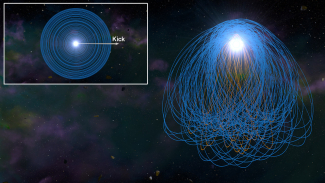In an article published by Universe Today, JILA Fellow and University of Colorado Boulder Astrophysical and Planetary Scientist Ann-Marie Madigan's recent research was discussed, revealing why these white dwarf stars often appear "polluted" with heavy metals, a long-standing astronomical puzzle.
The study, led by Tatsuya Akiba, a Ph.D. candidate, along with undergraduate Selah McIntyre and JILA Fellow Ann-Marie Madigan, was featured in The Astrophysical Journal. Their paper, titled “Tidal Disruption of Planetesimals from an Eccentric Debris Disk Following a White Dwarf Natal Kick,” presents a novel simulation-based approach to understanding how white dwarfs interact with their surrounding debris.
JILA's research offers a significant step forward in our understanding of the lifecycle of stars and their potential impact on surrounding celestial bodies. This study provides a compelling explanation for the long-lasting accretion events observed in white dwarfs and opens new avenues for exploring the future evolution of planetary systems.





